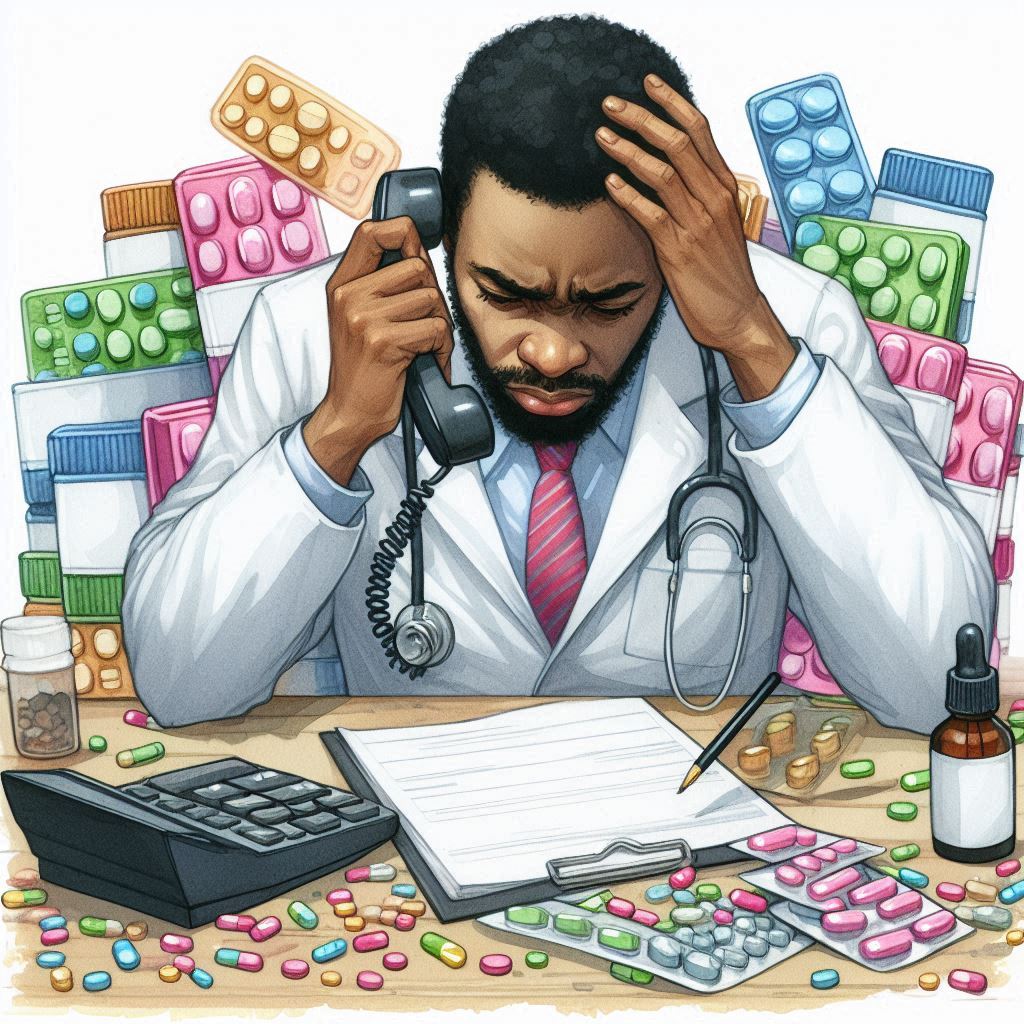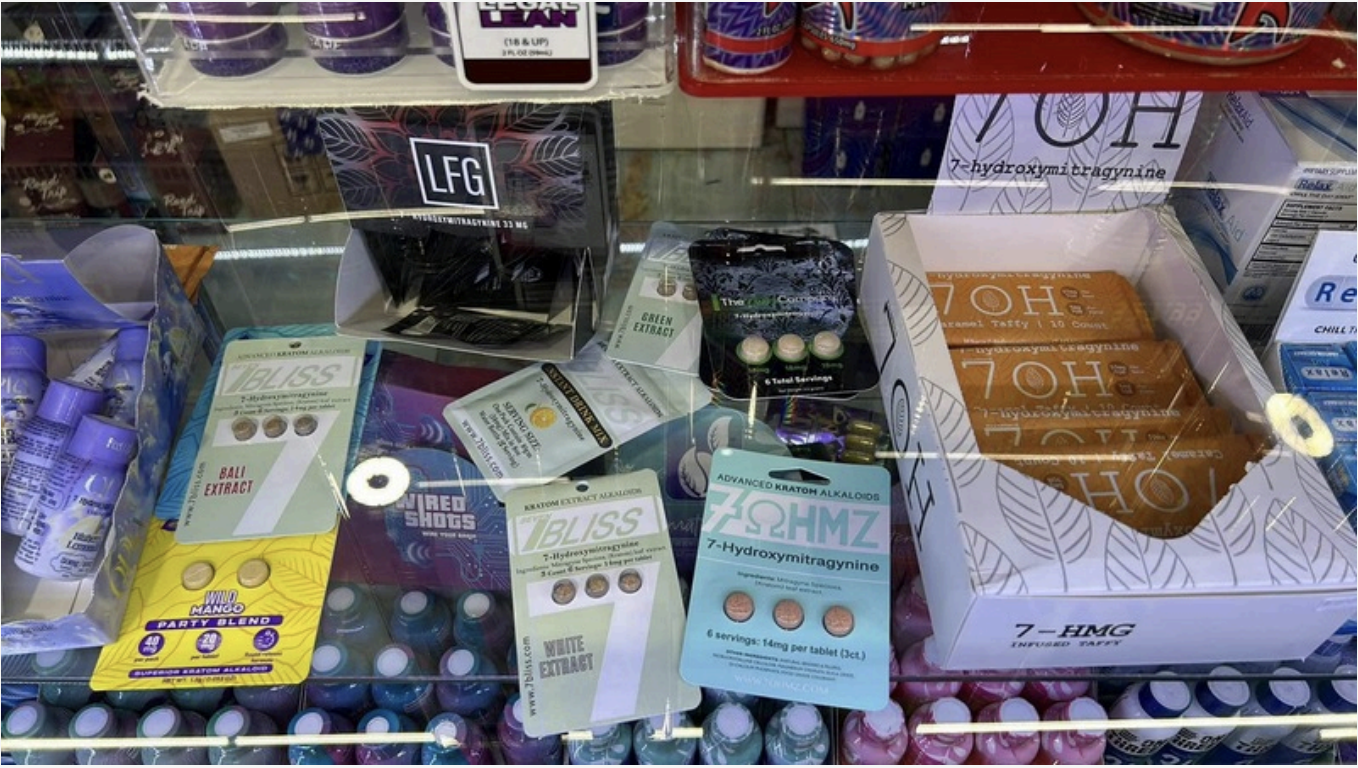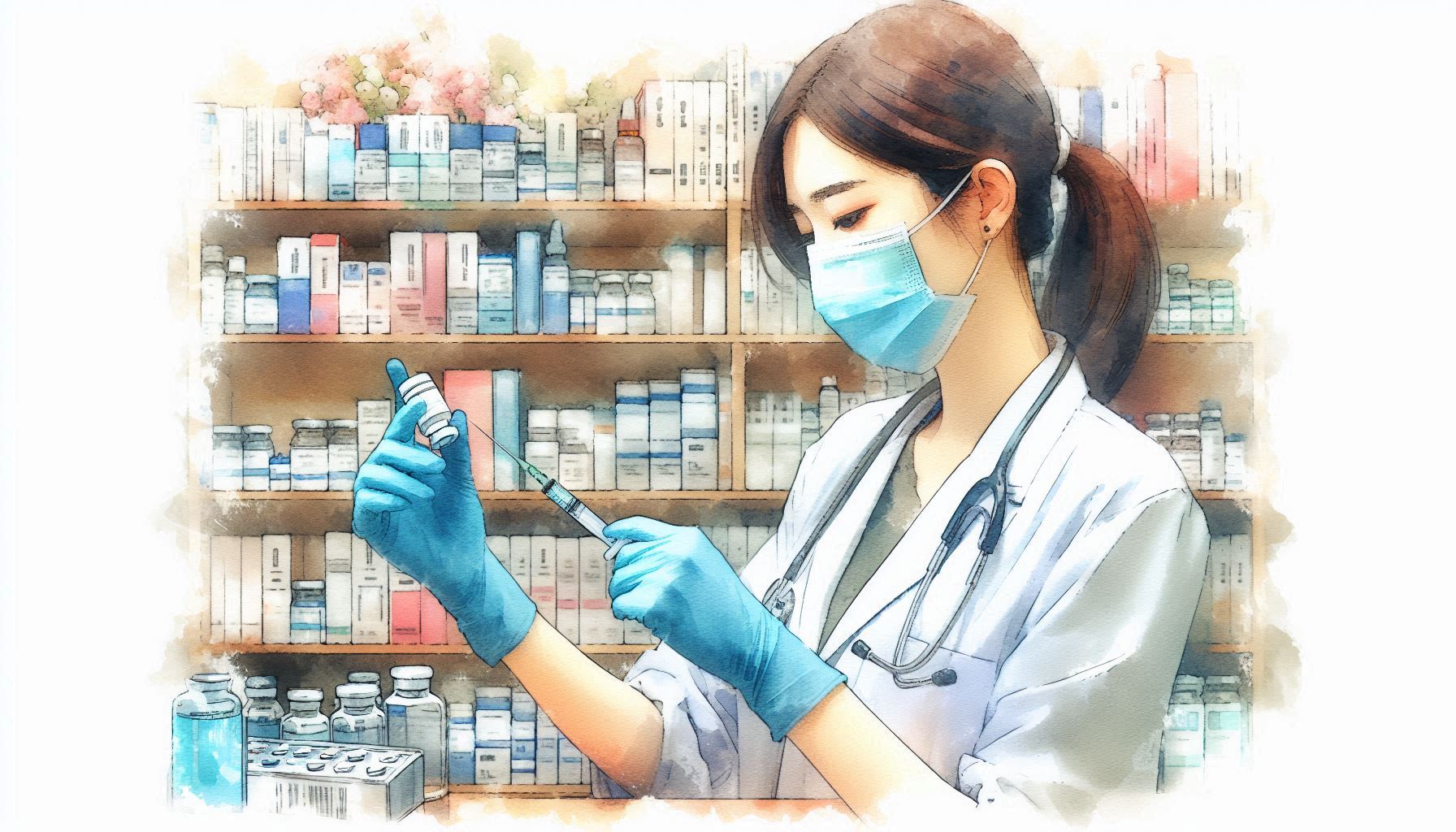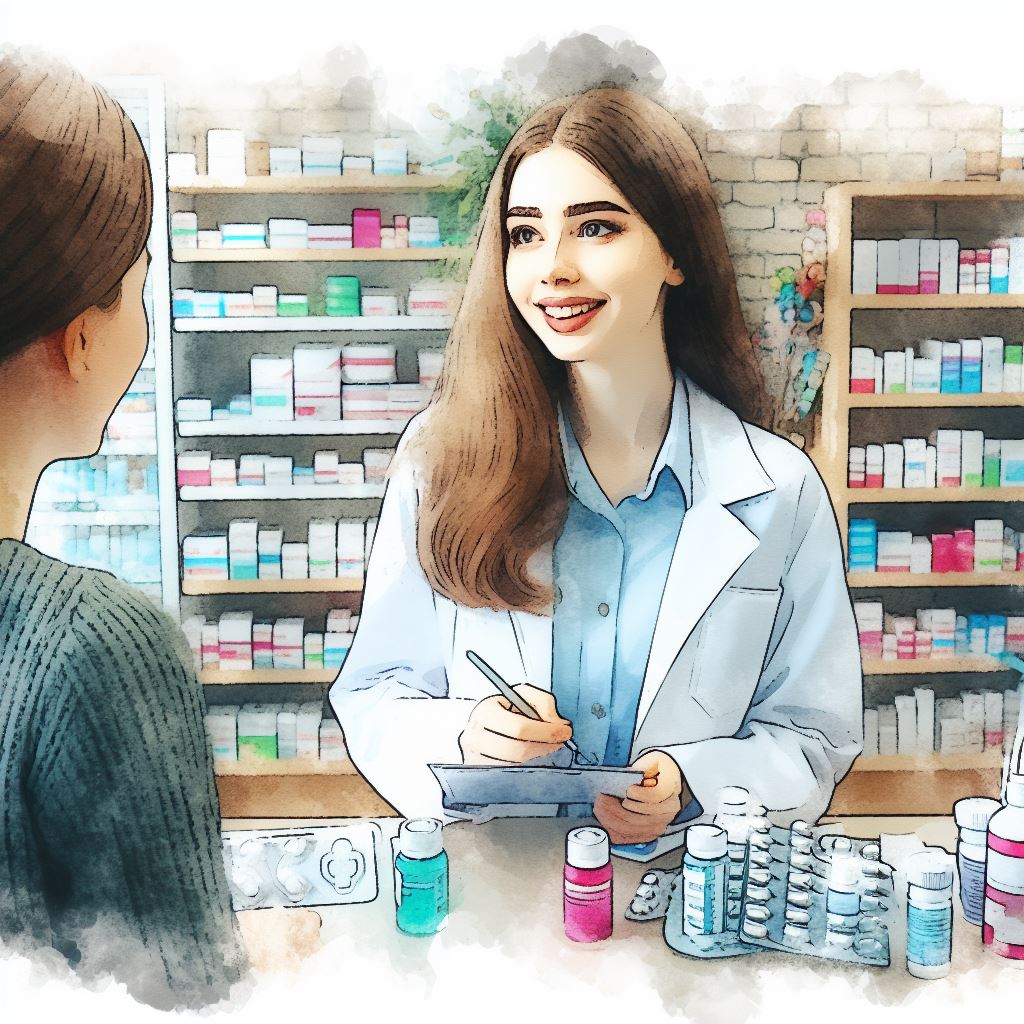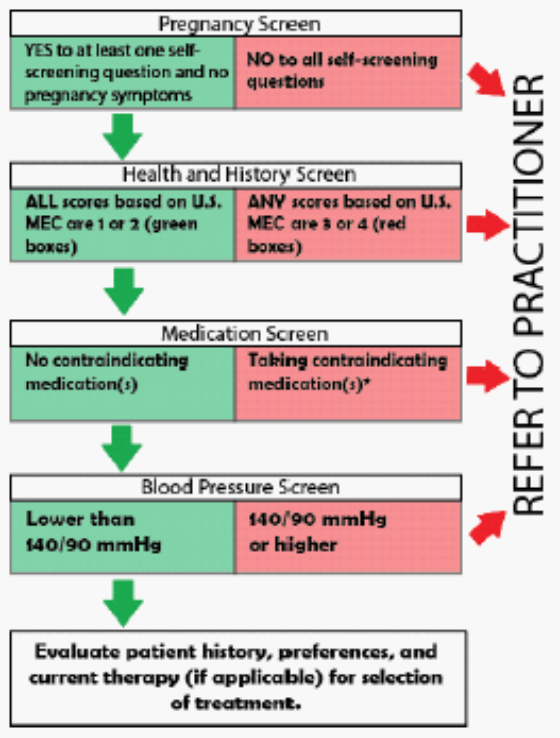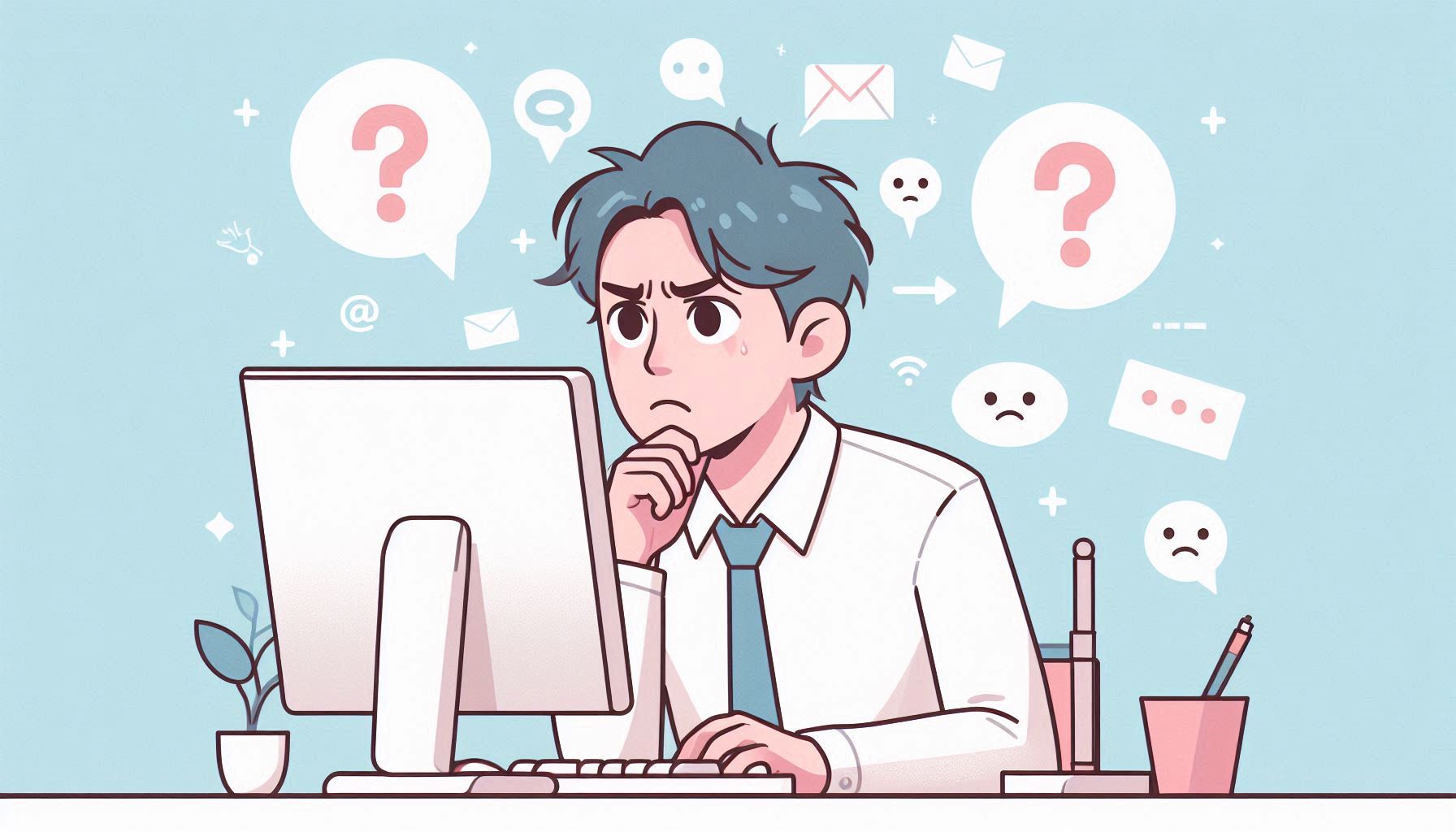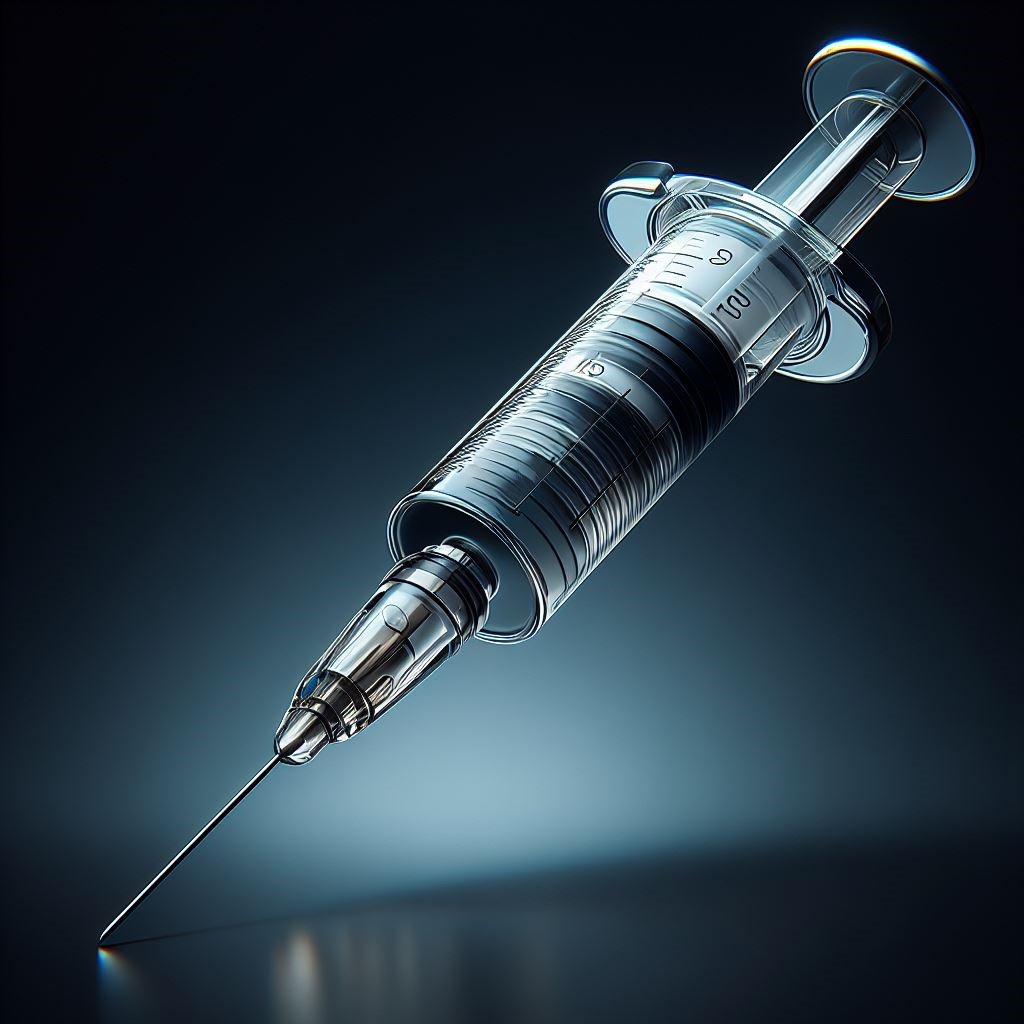INTRODUCTION
“This downward trend (in life expectancy) could be reversed if we make progress in controlling the COVID-19 pandemic and opioid epidemic.”1
--Robert H. Shmerling, MD, Senior Faculty Editor, Harvard Health Publishing
Data on life expectancy in the United States (U.S.) has been collected since 1900 and, with rare exceptions, has consistently increased.1,2 Life expectancy in 1900 was 47 years, reached 68 years in 1950, and by 2019, had risen to 79 years.1 However, in 2020 it fell to 77 and dropped again in 2021 to 76, the sharpest two-year decline in almost 100 years.1,3
Many factors contributed to the decline in life expectancy in the U.S., which was not seen in other parts of the world. These include diseases of the heart and liver, but about two-thirds of the decline can be accounted for by increased rates of COVID-19, drug overdoses, and accidental deaths.1,4 This reflects a continuation of disturbing trends in increases in what are termed “deaths of despair” (chronic pain, drug and alcohol dependency, and suicides).4
Harm reduction approaches have been shown to be effective in addressing public health epidemics including preventing death, injury, disease, overdose, and substance misuse.5 Harm reduction emphasizes direct engagement with people who use drugs to improve their physical, mental, and social well being, and prevent overdose and infectious disease transmission. It also simplifies accessing substance use disorder treatment and other health care services.5
Pharmacists have played an important role over the past few years in reducing the harm from COVID through vaccination, testing, and offering anti-viral drugs.5 Public health efforts to reduce tobacco consumption contributed significantly to the increase in life expectancy during the 1990s and 2000s, as fewer people died from complications related to smoking and nicotine.2 Community pharmacists contributed to this successful effort by providing support to individuals trying to stop smoking.6 Can pharmacists also help reduce the harm associated with the record number of drug overdose deaths?
This continuing education activity will review some harm reduction strategies that may be useful in coping with the drug overdose epidemic and describes current legal and regulatory issues that may be barriers to more widespread application.
PAUSE AND PONDER: How can pharmacists reduce harm from opioids?
OPIOID CRISIS
Drug overdose deaths have become the number one cause of accidental deaths in the U.S., surpassing even motor vehicle mishaps.7 Deaths from drug overdose have risen dramatically, increasing from 16,849 in 1999 to a new record of 104,000 in the 12-month period ending February 2022.8 These numbers represented more than a 6-fold increase over this period. The overwhelming majority of drug overdose deaths are associated with an overdose of an opioid. In 2020, approximately three of four overdose deaths involved opioids,9 compared with an opioid-related impact of 50% in 1999.10
The modern opioid crisis has occurred in three waves (so far). The first wave began in 1996 and was largely due to overdose from prescription opioids, fueled by what was perceived to be a widespread problem of undertreatment of chronic pain.11 Health care providers began prescribing more opioid pain relievers and the increased supply and diversion to non-medical use created an opportunity for more overdoses.11,12
This was addressed by clamping down on opioid prescribing. The overall national opioid dispensing rate significantly declined after 2012; by 2020, the dispensing rate had fallen to its lowest level in 15 years.6 Despite these efforts, overdose deaths from prescription opioids were higher in 2021 (16,706) than they were in 2012.13
Opioid overdose deathrates have continued to soar, suggesting that other factors have emerged and measures in addition to reducing supply are necessary to confront the epidemic.
The second wave began around 2010 as prescription opioids became harder to obtain and heroin’s price dropped; heroin became more attractive and popular.12,14 The third and current wave started in 2013 and is associated with an increased supply of illicitly manufactured and trafficked synthetic opioids, especially fentanyl and its analogs.12,14 (Evidence indicates a fourth wave is materializing characterized by polydrug abuse, typically the use of illegally manufactured opioids in combination with psychostimulants such as cocaine and methamphetamine.12,15)
DECREASING SUPPLY
As noted, it was believed that an oversupply of prescription opioids was fueling the overdose crises. (Indeed, opioid prescriptions per capita increased 7.3% from 2007 to 2012 and 259 million prescriptions for opioid analgesics were written in 2012 alone, roughly one prescription for every adult in the U.S.16) Abatement efforts were geared towards reducing the supply and diversion of opioids. These “supply side” approaches include prescribing limits, prescription drug monitoring programs (PDMPs), and regulation of pain clinics.17
This approach corresponded with the development of an opioid prescribing guideline by the Centers for Disease Control and Prevention (CDC) in 2016, which provided recommendations for primary care clinicians prescribing opioids for chronic pain outside of active cancer treatment, palliative care, and end-of-life care.16 The guideline’s focus on when to initiate or continue opioids for chronic pain; assessing risk and addressing harms of opioid use; and opioid selection, dosage, duration, follow-up, and discontinuation is detailed in Table 1.
Table 1. Summary of Centers for Disease Control and Prevention Guideline
Clinicians should
- Prescribe the lowest effective dosage when initiating opioid therapy
- Use caution when prescribing opioids at any dosage
- Carefully reassess benefits and risks when increasing dosage to 50 morphine milligram equivalents (MME)/day
- Avoid increasing dosage to 90 MME/day
Many states codified these voluntary recommendations through statutes or regulations that imposed enforceable limitations on medical professionals’ ability to prescribe or dispense opioids for pain treatment.18 The number of states with such restrictions increased from ten in 2016 to 39 by the end of 2019. States differed in their limits. At the end of 2019, the most common duration limit was seven days, with a range of three to 31. Fourteen states imposed limits on the daily dosage of opioids that could be prescribed, ranging from 30 MME to 120 MME.18
Enforced application of the CDC guideline, which was meant to serve as a guide for primary care providers, led to fewer opioid prescriptions along with reduced dosages, opioid tapering, and discontinuation of treatment among patients prescribed long-term opioid therapy.19 These actions resulted in multiple adverse outcomes including poor pain control and mental health issues for some patients. It forced many patients with pain to seek illicit sources as an alternative source of relief and resulted in an accompanying increase in overdose deaths.19
The most significant illicit substance emerging as the primary driver of the current overdose is fentanyl. Although technically a prescription drug, fentanyl’s primary source in overdose situations derives from illicit manufacture and importation.20
Fentanyl is a powerful mu-opioid receptor agonist that is 75–100 times more potent than morphine.21 Fentanyl rose to prominence as an alternative to morphine as an analgesic and anesthetic for surgeries more than 50 years ago due to its rapid onset, short duration of action, high potency, and limited cardiovascular risks compared to morphine. The potential for fentanyl misuse was initially believed to be minimal but it has emerged as a dangerous recreational substance.21 Although the media commonly describes it as a recent phenomenon, fentanyl has been used as a contaminant in illicit drug supplies since at least 1979.22 Fentanyl and its analogs have become the predominant factor in drug overdose deaths, accounting for almost two-thirds of overdose fatalities in 2021.22
Fentanyl is sold by itself and is also used as an adulterant in other products due to its high potency which permits dealers to traffic smaller quantities that retain the expected opioid effect.20,22 It is much more profitable for dealers to cut a kilogram of fentanyl compared to a kilogram of heroin. The drug is also made into counterfeit pills that resemble legitimate prescription opioids.20 Since there is no regulatory oversight nor quality control, the pills can contain lethal quantities of fentanyl.20
The COVID-19 pandemic made matters worse. Social isolation, loss of economic opportunity, boredom, despair, disruption of normal routines, and political polarization increased distress. Simultaneously, it became more difficult to access treatments, resources, and emergency services that help people suffering from opioid use disorder (OUD).19,23,24 Lockdowns and distancing efforts made it less likely that an individual who overdosed would be discovered and given rescue naloxone in time to prevent lasting injury or death.24 The decreased access to interventions and treatment led some patients to seek remedies on their own.19
In addition, COVID-19 mobility restrictions made it more challenging to smuggle illegal drugs into the country and border restrictions made it harder to move bulkier drugs.25 As a result, smugglers increased their reliance on fentanyl which, due to its potency, can be transported in small quantities and is easier to traffic by mail.22,25 This helped increase fentanyl’s availability in areas of the U.S. that had not previously been as impacted by the drug.25 Prior to the pandemic, fentanyl mainly affected urban areas in the eastern regions of the U.S. where it could be easily mixed with the powdered heroin popular there.25 Mortality rates from synthetic opioids more than doubled every two years in 28 states between 1999 and 2016; in Washington, D.C., mortality from opioids more than tripled every year from 2013-2016.26
HARM REDUCTION MEASURES
It is apparent that reducing supply has had limited success in reversing the upward trend in overdose deaths. Could another strategy be more successful? It is generally believed that harm and demand reduction strategies can contribute to stemming the opioid overdose crisis.5,17,23 Relevant harm reduction activities that can lessen the risk of adverse outcomes associated with drug misuse include medical treatment of OUD, provision of sterile syringes, overdose prevention sites, fentanyl testing, safe supply, overdose education, expanded availability of naloxone, and Good Samaritan laws.5,17,23 However, harm reduction approaches are underutilized; the CDC estimates that two-thirds of drug overdose deaths in 2021 had at least one potential opportunity for intervention.9
Medication Assisted Treatment of Opioid Use Disorder
Substance use disorders (SUD) are chronic conditions associated with many biologic, environmental, and social conditions.27 SUD frequently co-occurs with other mental illnesses including depression, anxiety, and post-traumatic stress disorder; half of people with mental illnesses will have an SUD at some point in their lives.27
OUD is a persisting and often relapsing condition requiring long-term care that is adjusted to meet individual patients’ needs by allowing changes in treatment designed to address fluctuations in symptomology.27,28 OUD requires medical and psychosocial therapy similar to the treatment of other chronic disorders.27,28 Opioid withdrawal, although very unpleasant and uncomfortable, is rarely life-threatening and is characterized by autonomic hyperactivity, and signs and symptoms which include anxiety, insomnia, nausea, vomiting, diarrhea, cramping, back pain, hot and cold flashes, and lacrimation.27,28 Treatment is generally directed at alleviating these signs and symptoms of withdrawal.27,28
Currently, three medications in the U.S. are Food and Drug Administration (FDA)-approved for use in Medication Assisted Treatment (MAT) of OUD: methadone, buprenorphine, and naltrexone.29 Medically supervised withdrawal or detoxification can both improve the patient’s health and facilitate participation in a rehabilitation program.30 It can also help patients accept abstinence from opioids after the acute withdrawal phase has subsided.30
Traditionally, medically supervised withdrawal was only offered as a hospital-based treatment of varying duration. Today, medically supervised withdrawal is most often provided in outpatient and residential treatment settings and is usually managed by tapering doses of an opioid agonist or partial agonist over a period of between one week to several months. 27,28 Slower reductions over longer periods of time generally lead to less illicit use during the medically supervised withdrawal. Longer duration of treatment allows restoration of social connections and is associated with better outcomes.28,31
Studies have suggested that MAT reduces overdose mortality by 3- to 4-fold, reduces the incidence of HIV and hepatitis-C transmission by half, doubles adherence to HIV antiviral therapy, and reduces drug-related crime. 27,28 However, it is usually not sufficient to produce long-term recovery by itself and may also increase the risk of overdose due to a loss of tolerance following abstinence.30
Medically supervised withdrawal can also involve the use of nonopioid medications on an off-label basis to help control symptoms. α2-adrenergic agonists such as clonidine (Catapres), tizanidine (Zanaflex), or lofexidine (Lucemyra) can decrease anxiety, piloerection (erection or bristling of hairs due to the involuntary contraction of small muscles at the base of hair follicles, often called goose bumps), and other signs and symptoms of autonomic overactivity.27,28,30 Adjunct therapy with medications such as anti-anxiety drugs, analgesics, sleep aids, anti-emetics, and anti-diarrheal products can also decrease the predominant withdrawal symptoms and decrease discomfort. 27,28
Long-Acting Opioid Agonists: Methadone and Buprenorphine
Prescribing a long-acting oral opioid, such as methadone or buprenorphine, is the most effective approach to treating a patient who is experiencing withdrawal.30 These treatments relieve symptoms. Gradually reducing the dose allows the patient to adjust to the absence of an opioid.
Oral methadone has the strongest evidence for effectiveness. Methadone has been used since 1964 when it was introduced as a medical response to the post-War heroin epidemic in New York City and its use has spread to many countries.27,28,32 Methadone is a full opioid agonist and N-methyl-D-aspartate receptor antagonist producing dose-dependent analgesia and sedation, with a risk of respiratory depression in overdose. It has a long half-life relative to abused forms of opioids, averaging about 24 hours with a variable range of 12-50 hours.31 It is typically delivered under direct daily supervision, at least initially, and treatment usually begins with a low dose that is slowly escalated.27,28
Methadone maintenance is used to relieve narcotic craving, suppress the abstinence syndrome, and block the euphoric effects associated with opioids. Treatment occurs for an indefinite period, since methadone maintenance is considered corrective rather than curative for addiction.32
When methadone is discontinued, it can lead to withdrawal which may be protracted due to its long duration of action.27,28 Consequently, methadone treatment is gradually reduced over several weeks or months. Methadone is primarily metabolized by CYP3A (along with CYP2D6 and CYP1A2) and inhibitors and inducers of these enzymes can affect therapy. 27,28
Although methadone is highly effective as an MAT, it has certain disadvantages related to being a full mu-receptor agonist.33 First, it has the potential to produce or maintain opioid dependence creating a risk of abrupt withdrawal if a patient misses a scheduled dose. This can be discouraging to patients who are trying to detoxify. In addition, there is no ceiling (or leveling off of effect) to the level of respiratory depression or sedation produced by a full agonist, and this can lead to fatal overdose.33
An alternative to methadone is buprenorphine which has a different pharmacologic profile. It is a partial agonist at mu-opioid receptors, an antagonist of kappa and delta opioid receptors, and an agonist at opioid-like receptor-1 (nociceptin).34 Despite being a partial agonist, it reportedly produces analgesic efficacy comparable to that of full μ-opioid receptor agonists in moderate to severe post-operative pain and pain associated with cancer.34 It shares the beneficial properties of methadone being orally active with a long functional half-life (20 to 73 hours) and produces similar improvement of opioid withdrawal while producing less respiratory depression and sedation.30 Buprenorphine maintenance may also result in a gentler withdrawal phase and the possible option of alternate-day dosing, due to its long duration of action.34 However, as a partial agonist, it can produce a competitive antagonism of a concurrently administered full opioid agonist. Buprenorphine should be initiated at least 12 to 18 hours after the last dose of opioids in patients who misuse shorter-acting drugs to avoid precipitating abrupt and more intense withdrawal.30
Buprenorphine is also available as a combination with the opioid antagonist naloxone, which minimizes intravenous misuse.31 Due to the low oral bioavailability of naloxone, it produces little opioid antagonism when the combination is taken orally or sublingually. However, if the preparation is crushed and injected, naloxone will block the reinforcing effects of buprenorphine and may also precipitate opioid withdrawal in a dependent individual.31
Studies comparing buprenorphine and methadone have reported mixed results, some showing no difference in efficacy between the two therapies, some showing methadone to be superior, and others finding buprenorphine to be superior.33
Opioid Antagonists
Opioid antagonists block the reinforcing effects of opioids and help maintain opioid abstinence in highly motivated patients.30 Naltrexone is an orally active long-acting mu- and kappa- opioid receptor antagonist, with effects lasting 24 to 36 hours.27,28,30 It is also available as an extended-release intramuscular injectable form with effects lasting one month.30 Oral naltrexone is used to treat both OUD and alcohol use disorder.36 However, oral naltrexone is not commonly prescribed for OUD because there is poor compliance and evidence suggests that it may not be more effective than placebo in treating OUD. Since naltrexone can precipitate withdrawal in opioid-dependent individuals, it is recommended that patients wait at least seven days after their last use of short-acting opioids and 10 to 14 days for long-acting opioids, before starting naltrexone.27,28,30,36 This presents a challenge for patients. An FDA-approved Risk Evaluation and Mitigation Strategy (REMS) that includes a Medication Guide is required for the long acting injectable, but it may otherwise be prescribed and administered by any practitioner licensed to prescribe.36
Pharmacists are familiar with the protype opioid antagonist, naloxone, which is also an important harm reduction measure. Naloxone is a short acting antagonist originally used by injection to reverse opioid-induced postoperative respiratory depression and later used to reverse potentially fatal respiratory depression in individuals who overdosed on opioids.36 Earlier rescue drugs such as nalorphine and levallorphan were partial agonists and, unlike naloxone, produced some respiratory depression.37
Naloxone’s onset of action in adults is less than two minutes when administered intravenously, and its apparent duration of action is on the order of 20 to 90 minutes; significantly, this is a shorter duration than that of many opioid agonists88 so that in some cases, the antagonism may decay before the agonist has been fully eliminated, placing users at risk of delayed respiratory depression.39 In other words, naloxone reverses the effect of the agonist drug but since naloxone wears off quickly, there can still be sufficient drug in the system to re-initiate the toxicity.
Pharmacists should note that medication treatments are also being developed and evaluated for other types of drug misuse, such as naltrexone plus buprenorphine for methamphetamine use disorder.27
Regulatory Issues
In the early 1900s, opiate drugs could be easily obtained from pharmacies. Diacetylmorphine, synthesized in 1874, was not often prescribed before 1900, but favorable reports of its effects stimulated interest from the medical profession.40 The German pharmaceutical company Bayer (yes, the aspirin people) started commercial production of the compound in 1898 and marketed it under the name, “Heroin.”40
Heroin was considered to be a “wonder drug” and the medical profession enthusiastically received it. The interest in heroin was prompted by the high occurrence of tuberculosis and other respiratory diseases and the need to find an effective remedy for cough and to induce sleep. Heroin was also believed to combat morphine addiction, but the inaccuracy of this approach became apparent after a few years.40
The drug quickly caught the attention of criminal elements and smugglers who recognized that its rewarding properties surpassed those of morphine, the then-dominant abused drug.40 Heroin also had the advantage of being able to be delivered by sniffing without the complications associated with intravenous injection.40 A new societal problem emerged.
The Harrison Act passed in 1914 brought about one of the first federal controls on opioids. The Act regulated “narcotics” (defined as opiates and cocaine) by imposing a special tax upon anyone who produced, imported, manufactured, sold, dispensed, distributed, or compounded these substances.41 It mandated special order forms and record keeping whenever narcotic drugs were sold and products could only be provided from packages bearing a government stamp.42
Physicians interpreted regulatory terms such "legitimate medical purposes," "professional practice," and "prescribed in good faith” to mean that they could provide narcotics to ease the suffering of withdrawal in addicts who were regarded as having a disease.42 However, the Treasury Department interpreted the Harrison Act to mean that any prescription for an addict for the purpose of relieving the trauma of addiction was illegal, and the Courts supported this position.42 Consequently, the only source available for an addict to obtain narcotics was through illegal means and physicians who used opioids to treat addicts risked federal and/or state criminal prosecution.42,43 A law intended to regulate commerce effectively led to criminalization of OUD treatment.
In 1972 the US Food and Drug Administration (FDA) approved methadone treatment for OUD and established methadone maintenance as a legitimate medical practice.43,44 However, concern about methadone diversion and accidental overdose fatalities, combined with political pressure from government agencies and groups committed to drug-free treatments, led to the development of detailed and unprecedented FDA regulations.43 The Narcotic Addict Treatment Act in 1974 created the first federal law governing methadone for OUD while state and local governments placed additional regulatory requirements on methadone.44,45 Congress granted the Drug Enforcement Agency (DEA) additional oversight of methadone treatment programs. Both the DEA and existing treatment providers have resisted efforts to relax the FDA regulations.43
Administration of opioids to treat opioid-use disorders can only be performed by licensed addiction-treatment programs (either office-based or inpatient treatments) or by physicians who have completed specific opioid drug training.30 Medical providers (physicians or advance practice providers such as physician assistants or nurse practitioners) may not use their DEA registration to prescribe methadone for OUD, but they can prescribe methadone tablets as a treatment for chronic pain.45
Federal law also requires an in-person medical evaluation prior to patient enrollment in an opioid treatment program (OTP).45 Initially, patients receiving methadone must return to the clinic a minimum of six days per week for medication administration with appropriate supervision for at least the first 90 days of treatment.45 Afterwards, they can qualify for additional take-home doses under certain conditions. After the first 90 days the take home supply may increase to two doses per week. After 180 days, they may receive three take home doses per week. By 270 days, they may qualify for six take home doses per week for the remainder of the first year. In the second year of continuous treatment, a patient may be given a maximum 2-week supply of take-home medication. In the third year, a patient may be given a maximum one-month supply of take-home medication, but must make monthly visits. States have the authority to further restrict administration and dispensing policies.44.45
However, in response to the COVID-19 pandemic, some impediments to methadone treatment were relaxed. In March 2020, the Substance Abuse and Mental Health Services Administration (SAMHSA) issued guidance allowing states to request that patients who are on a stable methadone dose be permitted to receive 28 days of take-home medication, and for patients who are less stable to receive 14 days of take-home medication.24
In contrast, buprenorphine can be prescribed by certified physicians, without the requirement for direct supervision of administration since diversion is associated with significantly less risk of fatal overdose than methadone.31
Patients being treated with MAT also encounter the restrictions of the Ryan Haight Act, named after a minor who overdosed on a controlled substance he obtained over the Internet with a prescription from a physician who did not conduct a proper medical examination. The law requires practitioners issuing a prescription for a controlled substances to first conduct an in-person medical evaluation.46
During the COVID public health emergency, the DEA waived the requirement that patients receiving buprenorphine must have an in-person consultation with a prescriber and permitted the consultation to occur via telemedicine.24
PAUSE AND PONDER: Should pharmacists be involved in facilitating access to OUD medications?
The Drug Addiction Treatment Act of 2000 (DATA) was enacted to permit physicians who meet certain qualifications to treat opioid dependence with FDA-approved C-III – C-V opioid medications, including buprenorphine, in treatment settings other than OTPs.47 DATA restricted the outpatient treatment of OUD with buprenorphine to clinicians receiving an “X- [or DATA] waiver.”48 To receive the waiver, clinicians were required to attend an eight hour training session and submit a Notice of Intent to SAMHSA; other eligible practitioners, including nurse practitioners and physician assistants, were required to obtain an additional 16 hours of training.48,49 Pharmacists and X Prescriptions were required to have the prescribers’ X-number in addition to their DEA registration number and pharmacists were expected to verify a practitioner's certification, but there were no other requirements for pharmacists beyond those for other Schedule III medications, such as special credentials.
In 2023, the Mainstreaming Addiction Treatment Act (MAT Act) eliminated the need for a special waiver to treat patients with OUD.50 Any practitioner with current DEA registration that includes Schedule III authority may prescribe buprenorphine for OUD. The MAT Act also removed other federal requirements associated with the waiver. However, pharmacists should be aware that state requirements may differ.49
Naloxone has also transitioned, becoming a more readily available substance. The FDA approved naloxone in 1971 as a prescription-only medication for intravenous, intramuscular, and subcutaneous administration to reverse postoperative respiratory depression induced by opioid analgesics.36,51 Overdose rescue was originally limited to emergency departments, but its use expanded to first responders and distribution by community groups to individuals with OUD or their family and acquaintances for emergency use.52 Reluctance to administer the drug with a needle led to improvised homemade intranasal naloxone delivery devices.51 FDA approval of a standardized, pre-assembled intranasal delivery form in 2015 significantly improved and simplified naloxone use.53 Pharmacists in all states were also granted authority to dispense naloxone through collaborative agreements or blanket standing orders.54 The FDA approved naloxone for OTC distribution in 2023.55
Safer Injection
Another harm reduction strategy is to make the experience of injecting opioids safer. Several different approaches may enhance the safety of injections.
Needle/Paraphernalia Exchange
Syringe services programs (SSPs) are community-based prevention programs which are thought to be a critical component of harm reduction interventions for injectable drug users.56,57 SSPs provide access to and disposal of sterile syringes and injection equipment and may also include offering referrals to medication-assisted treatment, as well as vaccination, testing, and links to care and treatment for infectious diseases.56 The majority of new hepatitis C virus infections are related to injection drug use and 10% of new HIV infections in the U.S. are attributed to injection drug use. Infections occur because needles, syringes, or other equipment used for injections may be contaminated with blood that can carry viruses. HIV can survive in a used syringe for up to 42 days, depending on temperature and other factors.58 In addition, people under the influence of substances are more likely to engage in risky sexual behaviors which can increase the risk of transmitting an infection.56,57
SSPs have the added benefit of protecting the public and first responders by facilitating the safe disposal of used needles and syringes. Many SSPs also provide “overdose prevention kits” containing naloxone.56,58
Safe Injection Facilities
Safe injection facilities (SIF; AKA overdose prevention centers, supervised consumption services, supervised injection facilities, drug consumption rooms, or safe havens) provide a sanctioned, safe space where people can inject drugs obtained elsewhere in a controlled setting under the supervision of trained staff with a goal of preventing fatal overdoses.59,60 Staff at the facility do not directly assist with injections or handle any drugs brought in by clients, but are present to provide sterile injection supplies, answer questions on safe injection practices and vein care, administer first aid if needed, and monitor for overdose. Participants can also receive health care and general medical advice, counseling, and referrals to health and social services, including drug treatment options.59,60
SIFs have operated in Europe since the 1980s.59 They generally target high-risk, socially marginalized injectable drug users who would otherwise inject in public spaces or shooting galleries. Reports generally show that SIFs have led to fewer risky injection behaviors and fewer overdose deaths among clients, increased enrollment in drug treatment services, and reduced the incidence of public nuisances associated with open injection.59 Although SSPs reduce the risks associated with contaminated needles and syringes, they do not address the harm created by users’ fear of the criminal justice system and stigma.59
In the U.S., states and some municipalities have the power to authorize SIFs under state law, However, they are still prohibited by the federal Controlled Substances Act.59,81 A Philadelphia non-profit planned to open consumption sites where individuals could inject controlled substances under supervision, but the Department of Justice (DOJ) sought to prevent it.61 The DOJ argued that a “consumption room” is intended to be a place where people consume drugs and would therefore be in violation of the CSA which prohibits any person from knowingly and intentionally maintaining a place for the purpose of illegal drug use. The District Court ruled that the CSA does not apply, but the decision was reversed on appeal. The Appellate Court ruled that the safehouse would violate the law because people will visit its facility with the purpose of using drugs. The law requiring CSA oversight of places where there is illegal drug use was originally passed to shut down crack houses. Despite the organization’s “admirable” motives and the need for “innovative solutions” to combat the opioid crisis, the court held that “courts are not arbiters of policy” and “local innovations may not break federal law.”61 The decision was appealed to the Supreme Court, but they rejected the request to hear the case; some issues are still pending.
In November 2021, New York City opened the first supervised injection site in the U.S., six weeks after the Supreme Court decision.62 In its first three months, approximately 800 people used the center more than 9500 times and it averted at least 150 overdoses. The site supplies syringes, alcohol wipes, straws for snorting, other paraphernalia, and oxygen and naloxone in case of an overdose.62 A few other cities and the state of Rhode Island have also established a pilot program for safe injection sites.62
Despite the results in the Philadelphia court case, the DOJ has indicated a willingness to relax its opposition to safe sites, saying that it was evaluating them and discussing “appropriate guardrails.”62 Some members of Congress have expressed opposition to permitting sites to operate and a former DEA official has stated that “the goal has to be to stop doing drugs” and encourage treatment.62
Safer Supply Prescribing
Another possible risk mitigation approach that could impact pharmacists is safer supply prescribing. This expanding movement in Canada allows prescribers at recognized sites to write prescriptions for government-funded, pharmaceutical-grade products, primarily opioids.63,64 The most commonly offered products at the sites studied were injectable and tablet hydromorphone, and medical grade heroin.63 Some clinics are supplying pharmaceutical-grade fentanyl to offset the unregulated street supply.64 One site delivers medication to multiple clients quarantined in a motel.63
Pharmacy models included hospital-based pharmacies and partnerships with a service site to either provide the site with medication or provide it directly to clients.63 In some instances, users can select their own pharmacy. There are also machine-dispensed services offering prescribed opioids for up to 15 clients without the barriers of daily observation or check-ins.
This practice is currently illegal in the U.S. but has its advocates such as a Yale addiction medicine physician who said “(w)e need to be doing everything possible to try, at a minimum, to make a dent in the unrelenting deaths that in large part have been due to changes in the unregulated drug supply.”64
Some preliminary studies have suggested that these programs can lower overdose risk. Providing drugs to participants when other treatment strategies haven’t worked can reduce illicit drug use, reduce emergency department visits and hospital admissions, and connect users to care.64
Critics, including addiction specialists, argue that users should be directed toward treatment for their dependence and that providers should focus on reducing drug use rather than providing drugs. Some people are concerned about the potential for diversion and have likened these programs to the overprescribing of opioids that initially helped fuel the overdose crisis.64
PAUSE AND PONDER: Would you participate in a safe supply program?
Test Kits
Another approach to harm reduction is the use of test strips that can detect contaminants such as fentanyl in street drug samples.65 Test strips are prefabricated strips of a carrier material containing dry reagents that are activated by applying a fluid sample. They can detect the presence of substances within a matter of minutes.66 Strips are available to detect many different illicit drugs and are similar to commonly used test kits for detecting pregnancy, failure of internal organs (e.g., heart attack, renal failure, or diabetes), infection or contamination with specific pathogens, or the presence of toxic compounds in food or the environment.66 The strips rely on a lateral flow chromatographic immunoassay technology for the qualitative detection of fentanyl and many analogs at concentrations above 200 ng/mL.67 The strips have no significant cross reactivity to other opiates and the interpretation of test results is simple: positive (one line), negative (two lines), invalid (no lines or no control line).67
The strips were created in 2011 to detect prescription fentanyl in urine as part of a clinical identification of recent drug use. As fentanyl was found more frequently in analyses from drug overdoses, the harm reduction community began using the tests off-label, especially in syringe services sites, to test samples. This empowered drug users to understand what substances they were consuming, making them safer.68 A study of drug users in North Carolina found that receiving a positive test result was associated with changes in drug use behavior and perceptions of overdose safety.68 Behavioral changes included using less drug, administering a test shot, injecting more slowly, or snorting the sample instead of injecting it. They introduce an element of caution for the drug user.69
The use of test strips is restricted in many areas. It is clearly legal to possess some or all drug checking equipment in 22 states, and clearly legal to distribute it to adults in 19 states.65 In 14 states where distribution of drug checking equipment is not generally legal, it is legal when the equipment is obtained from a syringe services program.65 Tools used to detect fentanyl are classified as drug paraphernalia in more than a dozen states, making it a crime to possess or distribute them.70 These state laws emerged in the 1970s at the urging of the DEA claiming that distributing paraphernalia serves to facilitate drug use. Many states continue to maintain a hardline posture.70 While laws define drug paraphernalia broadly, they are not always rigorously enforced.68 However, violators may face potential penalties ranging from small civil fines to multi-year jail sentences.65
PAUSE AND PONDER: What reservations might you have about advising a patient to purchase fentanyl test strips?
Although these devices have some legal restrictions, demand in the U.S. has grown more than 430% in the past three years.71 They are becoming available in clubs, bars, restaurants, and pizza shops and are frequently distributed for free. Some advocates equate strips to condoms as a public health measure. The FDA warns that it doesn’t actively regulate fentanyl test strips, which places the burden of determining their reliability on buyers.
The strips are available from Amazon and can be obtained from public vending machines in some areas.
SUMARY AND CONCLUDING COMMENTS
The opioid overdose crisis continues to worsen. Despite many efforts over the past decade to reduce the supply of prescription opioids, overdose deaths continue to climb from drugs obtained via illicit sources. While efforts to reduce supply continue, there are also attempts to institute harm mitigation programs. However, existing laws and regulations can make accessing these measures difficult.
Recent efforts have eased the prescribing and use of MAT. This provides pharmacists with a potential opportunity to become more involved with SUD treatment. MAT is underutilized with evidence suggesting that only 13% of people with drug use disorders receive any treatment, and more than half of those with co-occurring conditions receive treatment for neither. Other measures involving pharmacists include increased naloxone access, and availability of test kits in pharmacies.
More controversial models have also gained some acceptance, but strong opposition remains. Pharmacists are or may become involved with programs such as needle/syringe exchange, safe sites, and, as aways, there are opportunities for education and counseling. Pharmacists should also be prepared for the possible, albeit unlikely, introduction of the Canadian model of supplying pharmaceutical grade opioids and other controlled substances to users.
Pharmacists have demonstrated value in implementing harm reduction strategies for many disease states and interested pharmacists should be prepared to be involved with the growing number of opportunities to reduce the opioid overdose crisis.

